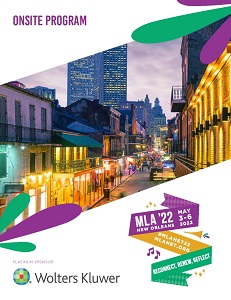Back
Paper: Program Description Abstract
Information Management
Session: Information Management 1
Creating a Digital Repository of Departmental Research to Enhance and Measure Research Impact
Wednesday, May 4, 2022
2:00 PM – 2:15 PM CT
Location: 353
- TS
Tenley N. Sablatzky
Medical Librarian
Prairie View A&M University, Undergraduate Medical Academy
College Station, Texas
Presenter and Author(s)
Background: Our department has been active in research and educating pre-health science students since 2004. As of 2020, the department has 321 alumni, 12 full-time faculty members, and 74 undergraduate students. However, with a lack of internet presence, the majority of research from the department remains unknown. Upon the hiring of a liaison librarian in early 2020, the idea of creating a digital repository to organize and promote departmental research emerged. The goal was to create a repository to help secure grant funding for future research endeavors, measure research impact, and encourage incoming students to join the scholarly conversation.
Description: The librarian came to the decision to use Zotero Groups because of its accessibility and ease of use. From there, faculty, staff, and current students were contacted and asked to provide a current CV or a link to an academic profile online. A list of alumni names, graduation years, post-graduation plans, and contact information was obtained from the department’s admissions staff. The librarian used this information to locate all the department’s publications and added them to the collection. Each publication item in the Zotero collection with a pre-determined schema for easy navigation. Once the collection was complete it was made public on the department’s web page. The librarian then turned to determining the research impact of the department by looking at the total number of publications and total citations of each keeping track of everything in Microsoft Excel.
Conclusion: The librarian plans to keep track of how the repository is used over the next year and get faculty feedback on how it has increased awareness of the department’s research. The librarian will also continue to keep the repository current as new citations are published. The librarian is on track to have the research impact by the end of 2021 and will make promotional images for the recruitment team. The librarian will also use the collection in instructional classes to incentivize students to begin their own research projects. The overall usage and impact of the collection will be assessed after a year through faculty and student feedback. Suggestions for improving the collection will also be solicited.
Description: The librarian came to the decision to use Zotero Groups because of its accessibility and ease of use. From there, faculty, staff, and current students were contacted and asked to provide a current CV or a link to an academic profile online. A list of alumni names, graduation years, post-graduation plans, and contact information was obtained from the department’s admissions staff. The librarian used this information to locate all the department’s publications and added them to the collection. Each publication item in the Zotero collection with a pre-determined schema for easy navigation. Once the collection was complete it was made public on the department’s web page. The librarian then turned to determining the research impact of the department by looking at the total number of publications and total citations of each keeping track of everything in Microsoft Excel.
Conclusion: The librarian plans to keep track of how the repository is used over the next year and get faculty feedback on how it has increased awareness of the department’s research. The librarian will also continue to keep the repository current as new citations are published. The librarian is on track to have the research impact by the end of 2021 and will make promotional images for the recruitment team. The librarian will also use the collection in instructional classes to incentivize students to begin their own research projects. The overall usage and impact of the collection will be assessed after a year through faculty and student feedback. Suggestions for improving the collection will also be solicited.

.png)

